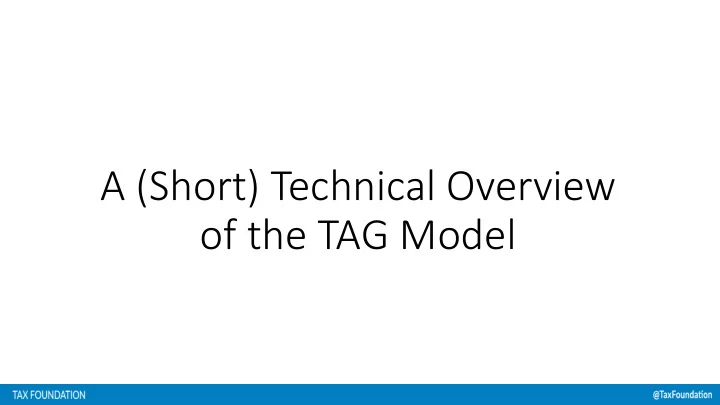

A (Short) Technical Overview of the TAG Model
Current Model • Tax Foundation Taxes and Growth (TAG) model currently uses a neoclassical production function and a tax simulator to estimate the effects of changes in tax policy on long run output, within a small open economy framework
Tax Foundation Model Structure and Assumptions Comparative Statics Model • Assumes a market in long-run equilibrium. • No adjustment path is calculated. Open Economy • Financial markets move capital freely across borders. • Long-run supply of capital goods is highly elastic. Deterministic • Probability Ranges Not Modeled A Neutral Federal Reserve • The FED does not react to changes in the economy. • The FED maintains a target inflation rate. Technology does not change • Total factor productivity is constant. • Technological development does not correlate with growth/contraction. Taxpayer Demographics • The demographics of taxpayers do not change with growth/contraction. • The Public Use Files from the IRS are scaled with growth/contraction
Model Assumptions: Stylized Facts Labor’s share of factor income is constant • Historically, labor and capital have garnered roughly constant shares of economic output (after inflation and economic depreciation of capital). Labor supply is relatively inelastic • Empirical studies have shown that primary pool of labor is virtually invariant to wage (elasticity of 0.1) and the second pool of labor more responsive (elasticity of close to 1). • TAG model uses a 0.3 elasticity of labor with respect to wage. • CBO estimates a wage elasticity for all earners of 0.19. Long-run real after-tax rate of return to physical capital is constant • Investors in a stable economy require a minimum of 3%-4% return to delay consumption. Data suggests this has been relatively constant over time.
Recommend
More recommend